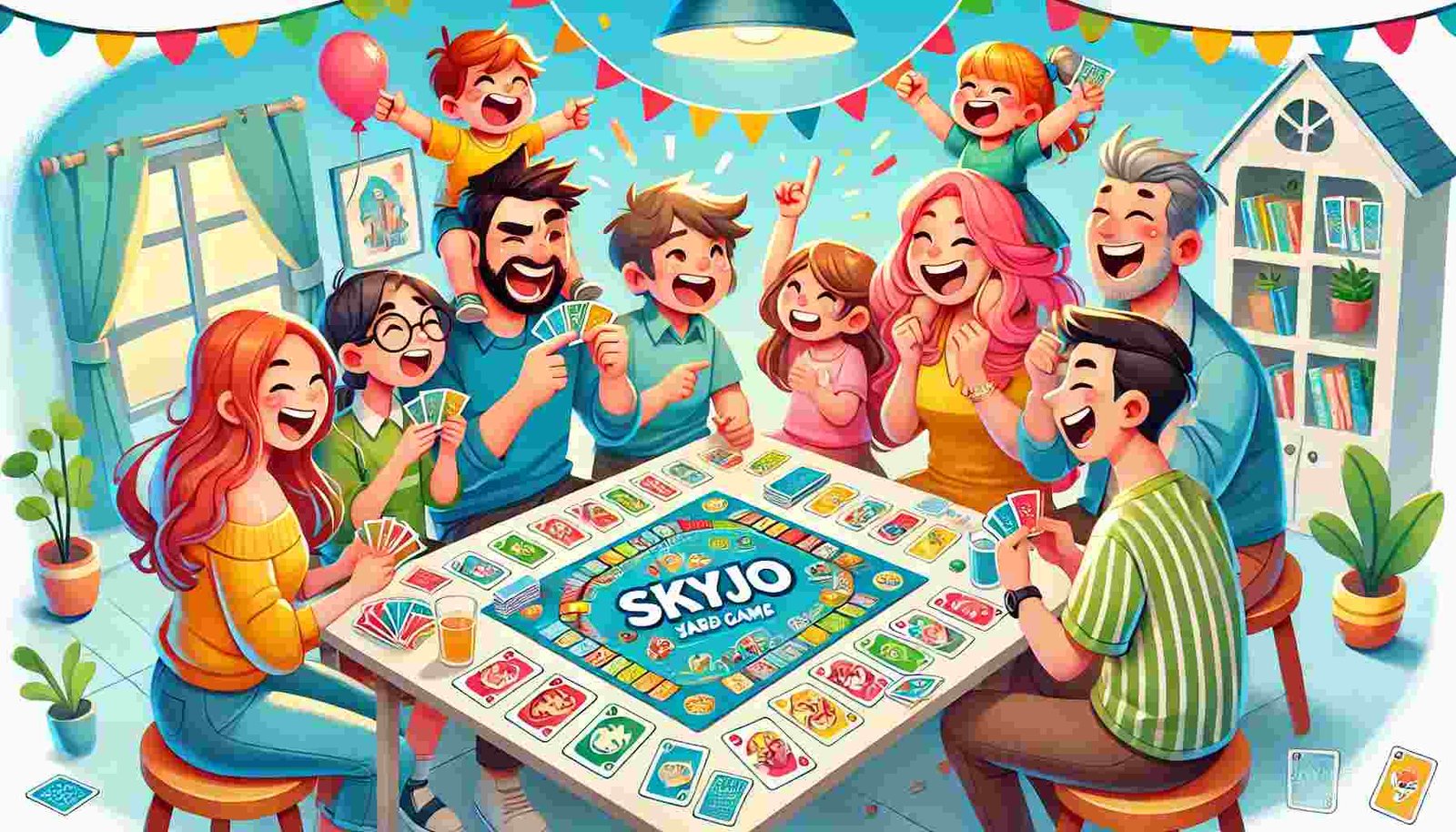Looking for a game that’s easy to learn, fun to play, and brings the whole family together? Say hello to Skyjo, the ultimate card game that combines strategy, chance, and a splash of math! Whether you’re a casual gamer or a competitive player, Skyjo has something for everyone. Let’s dive in and discover why this game is a favorite for game nights everywhere.
Table of Contents
What Is Skyjo Card Game and Why Is It Popular?
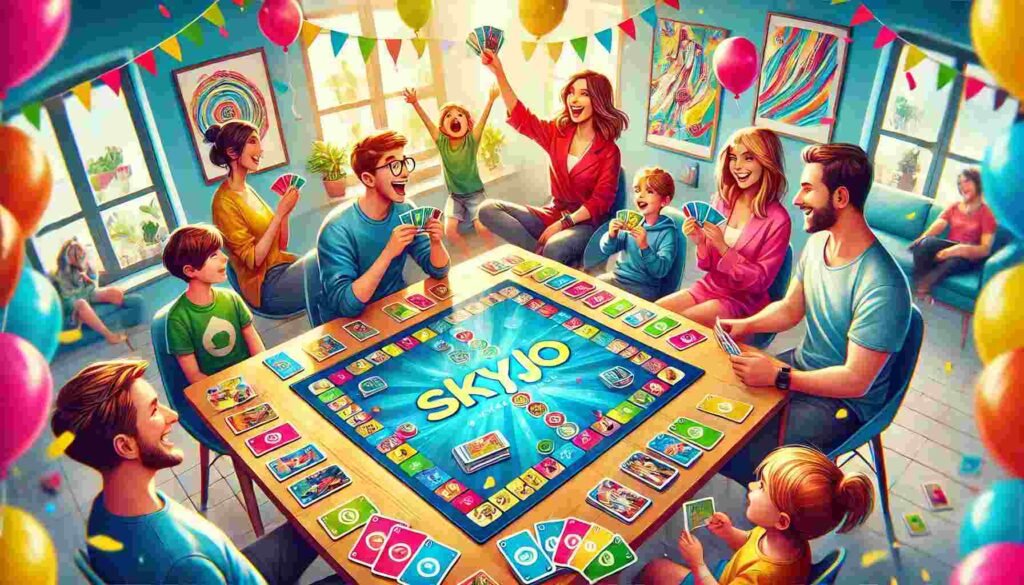
Skyjo is a card game created by Magilano that has quickly become a staple in households.
Parents love Skyjo for sneaking in some education while having fun. The game encourages mental math as players calculate scores and weigh strategic decisions. Kids learn while playing—a win-win for everyone!
Key Features of Skyjo
- Easy Setup: No lengthy rulebooks—just shuffle the deck, deal the cards, and start playing!
- Strategic Fun: While luck plays a role, smart decision-making can give you an edge.
- Educational Twist: Incorporates mental math, making it great for kids and adults alike.
How to Play Skyjo Card Game
Skyjo is the kind of game that’s easy to pick up but hard to put down! Let’s explore the rules for the Skyjo card game.
Setup
Each player starts with 12 cards placed face down in a grid (3×4). Two of these cards are flipped face up to begin. The remaining cards form a draw pile, and one card is placed face-up to create a discard pile.
Objective
The goal is to score the lowest points by the end of the game. Players achieve this by strategically replacing high-value cards with lower ones during their turns.
Gameplay
- Drawing a Card: On your turn, you can either:
- Pick a card from the discard pile (revealed card).
- Draw a card from the draw pile (unknown card).
- Using the Card: After drawing, you have two options:
- Replace one of your face-down cards or visible cards with the drawn card.
- Flip over a face-down card in your grid to reveal it.
- Ending the Round: The round ends when one player flips all 12 of their cards. Other players get one final turn before everyone reveals their remaining face-down cards.
- Scoring: Calculate the total points based on the values of the revealed cards. If the player who ends the round doesn’t have the lowest score, their points for that round are doubled.
Special Rule
If a player has three cards with the same value in a single vertical column, they can remove the entire column, reducing their score significantly.
Winning the Game
The game continues across multiple rounds until one player’s total score reaches or exceeds 100 points. The player with the lowest overall score wins.
Fun House Rules for Skyjo Card Game
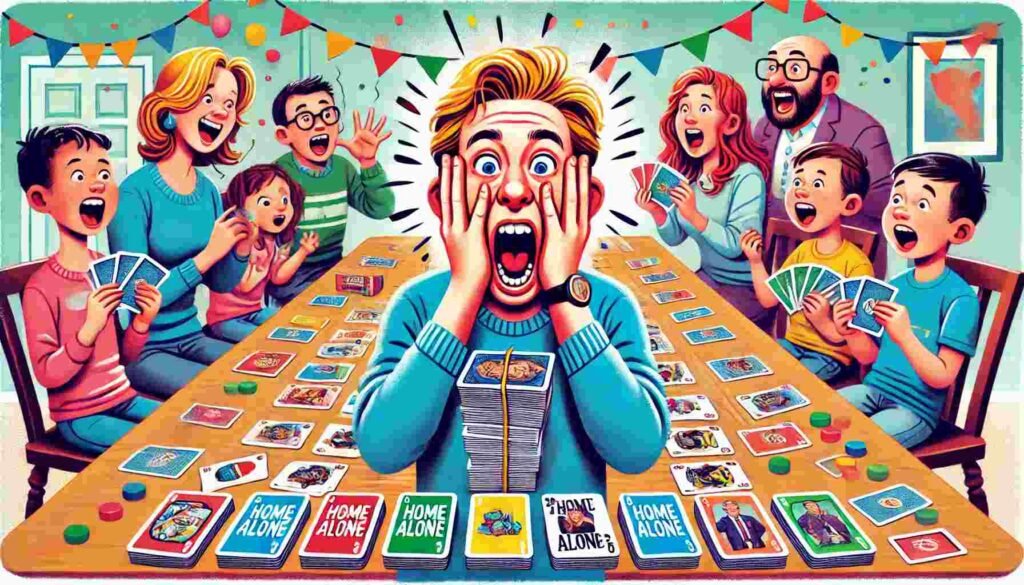
Tired of playing Skyjo the traditional way? Get ready for these laugh-out-loud, completely off-the-wall house rules that will transform family game night into a chaotic and hilarious adventure. You’ll never look at Skyjo the same way again!
1. The Skyjo Kevin’s Scream
Every time someone flips over a card valued at 10 or higher, they must scream like Kevin in Home Alone—hands on cheeks, wide-eyed, and absolutely over-the-top. If their scream doesn’t capture the full drama of the iconic moment, the group votes, and they must draw an extra card.
2. Skyjo Animal Kingdom
Each player is assigned an animal at the start of the game (e.g., monkey, chicken, dog). During their turn, they must make their animal’s sound before drawing a card. Forgetting? That’s a penalty card for you!
3. The Backwards Skyjo
Flip the entire game on its head. You must play every card as if you’re trying to get the highest score instead of the lowest. Negative numbers are your worst nightmare, and the player who ends the round with the lowest score gets an automatic penalty of 20 points.
4. Card Thief Caper
Any time a player flips over a card valued at -2, they immediately get to steal a face-up card from another player’s grid. But here’s the catch—they must dramatically narrate their heist like a movie villain.
5. Skyjo Auction
Once per round, a player can declare an “auction.” They offer one of their face-up cards for bidding. Players bid using candy, chores, or hilarious dares (e.g., “I’ll trade you this 12 if you hop around the room like a frog!”). It adds a fun negotiation layer and guarantees a few outrageous dares every game.
6. The Mischievous Skyjo Elf
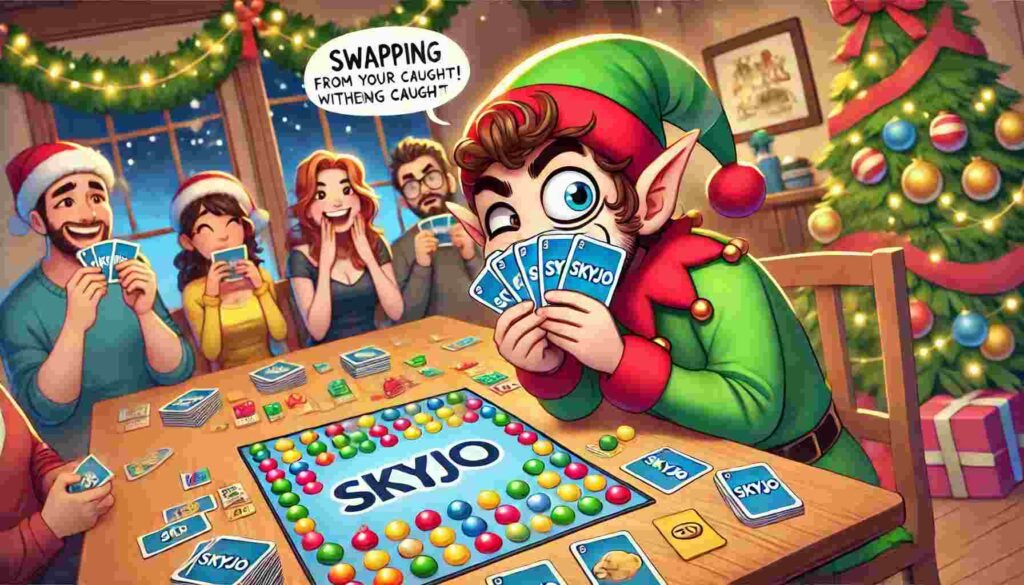
At the start of the game, designate one player as the “Elf.” Their job? To sneakily swap one of their cards with an opponent’s card without getting caught. If they’re caught, they draw three cards as a penalty. The sheer paranoia of watching everyone’s hands will have you laughing and pointing fingers nonstop.
Skyjo vs. UNO: Which Card Game Suits Your Style?
Skyjo and UNO are both beloved card games that bring people together for hours of fun, but they cater to slightly different audiences and play styles. Here’s how the two stack up:
Gameplay Comparison
- Skyjo:
- Focuses on strategy and decision-making.
- Players aim for the lowest score by replacing high-value cards with lower ones.
- Offers an element of suspense with hidden cards that can change the game.
- UNO:
- Fast-paced and chaotic, with simple rules.
- Players try to match colors or numbers while using special action cards (e.g., Reverse, Skip).
- Winning is often about speed and quick reactions.
Player Count and Engagement
- Skyjo: Supports 2 to 8 players, making it versatile for small or large groups. The gameplay remains engaging at all player counts thanks to its strategic depth.
- UNO: Best enjoyed with 2 to 10 players. It shines in party-like atmospheres but may lack depth for smaller, quieter gatherings.
Complexity and Learning Curve
- Skyjo: Rules are straightforward but require a few rounds to master scoring strategies. Its mix of math and logic makes it slightly more challenging for younger players.
- UNO: Extremely beginner-friendly and easy for kids to pick up immediately, with little to no learning curve.
Game Duration
- Skyjo: Each round takes about 30–45 minutes, with multiple rounds typically needed to determine a winner.
- UNO: Quick rounds, often completed in 15–20 minutes, depending on the number of players and house rules.
Educational Value
- Skyjo: Encourages mental math and strategic thinking, making it a favorite for families looking to combine fun with learning.
- UNO: Helps younger players with color and number recognition but doesn’t offer significant educational benefits beyond that.
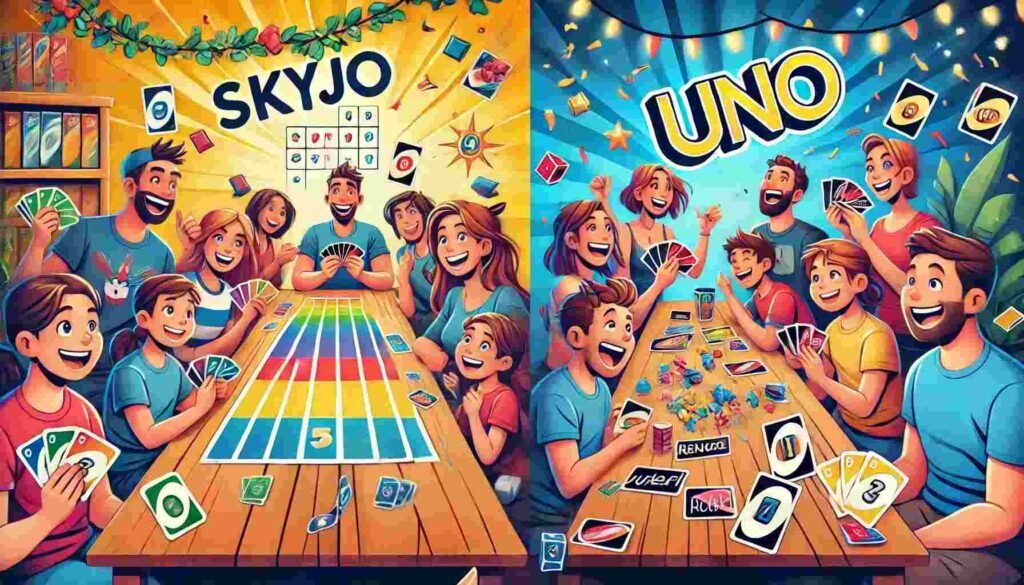
So, Skyjo is best for those who enjoy mental math and It’s great for family gatherings, game nights, and players who want a slightly more thoughtful experience, while UNO is Perfect for casual play, parties, and young children. It’s a high-energy game that thrives on social interaction and laughter.
FAQs About Skyjo Card Game
How long does a game of Skyjo last?
Most games take about 30–45 minutes, making it perfect for a quick round or two.
Can Skyjo be played with two players?
Yes! Skyjo is best for 2-8 players. While it shines with larger groups, it’s equally enjoyable as a two-player game.
Where Does the Skyjo Card Game Come From?
Skyjo was created by Magilano, a German company focused on designing family-friendly games.
Does Skyjo have different editions?
Yes, Skyjo has two main editions: the Classic Skyjo and Skyjo Action.
– Skyjo Classic: Best for quick, casual play and ideal for beginners or younger players.
– Skyjo Action: Includes additional action cards for more strategy and complexity, making it perfect for experienced players.
How Does Skyjo Compare to UNO or Phase 10?
Skyjo focuses on reducing your score with strategy and math, while UNO emphasizes fast-paced color and number matching. Phase 10 is goal-oriented with multi-round objectives, whereas Skyjo simplifies gameplay with straightforward score management.
What Other Family Card Games Are Like Skyjo?
If you enjoy Skyjo, you might also love these similar family card games:
– Spite and Malice: A competitive card game often referred to as “cat and mouse,” where players race to play cards in sequence while sabotaging their opponents.
– Rummikub: This tile-based game combines elements of card games and puzzles. The key rule is forming runs or sets, but you can also rearrange tiles on the table to create new combinations.
– Exploding Kittens: A fast-paced game where players draw cards to avoid “exploding.” Special cards allow players to defuse bombs, skip turns, or sabotage others.
– Dutch Blitz: A high-speed game where players race to build stacks of cards in ascending order, using a shared central area to compete for placement.
